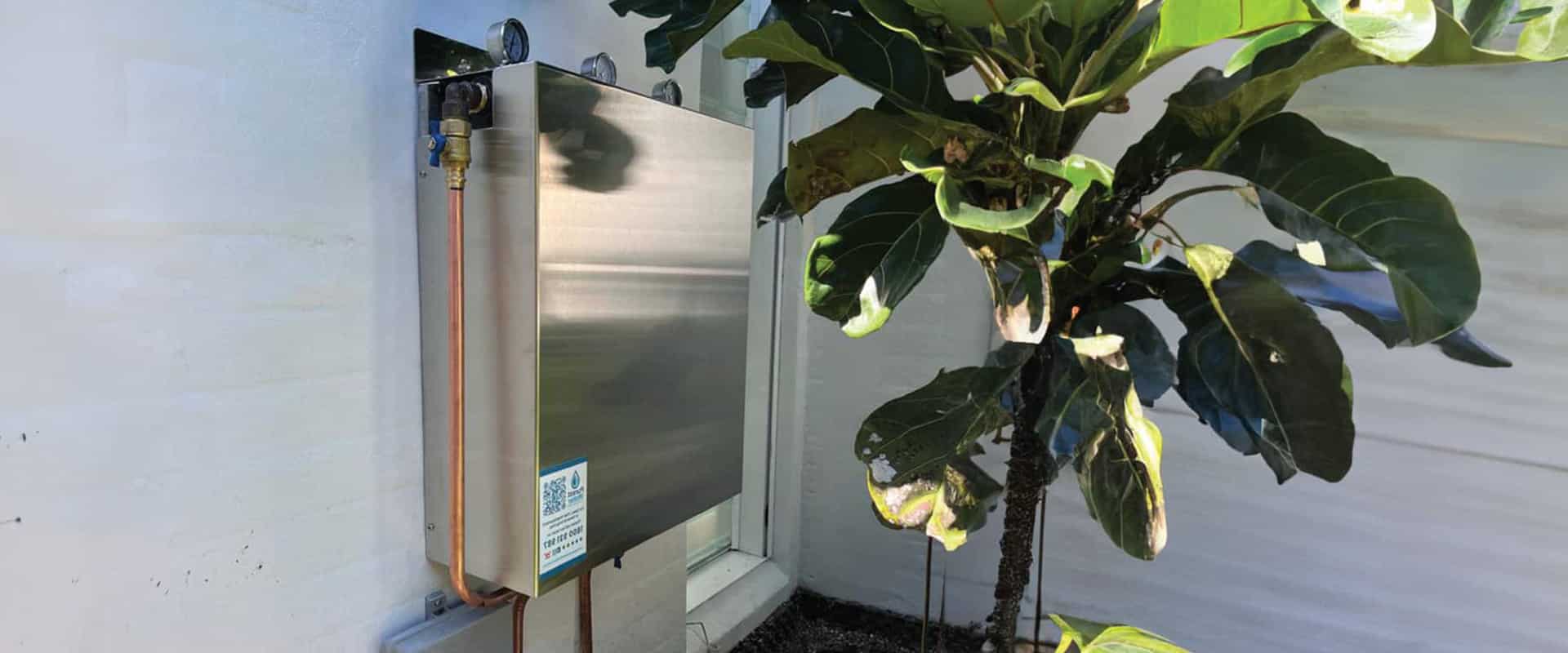The Demand for Safer Drinking Water in Australia
Whether in a small apartment or a big house, an RO system can work for you. The most common choice is an under-sink RO filter. It fits under your sink and gives clean water from the tap.
If you want filtered water from every tap, a whole house water filter Australia is ideal. It’s a great option for Aussie homes.It connects at the main water line, so every tap, including showers and laundry, gets cleaner water.
Apartments usually go for under-sink systems because they’re compact and easy to install, while houses may have the space for a full-home setup.
RO water is also great for more than just drinking. Use it for cooking, mixing baby formula, or even in fish tanks, where water quality matters. Whatever your home setup, there’s an RO system that makes everyday life healthier and safer.
What Makes Reverse Osmosis Filtration Different?
Not all filters are the same — reverse osmosis goes further. Carbon filters improve taste, and UV kills germs, but they don’t remove everything. Distillers clean water well, but can be slow and use lots of power.
A reverse osmosis system goes further. It uses a fine membrane to block tiny stuff like lead, fluoride, and microplastics. It clears out things you can’t see, taste, or smell.
Most RO water filters use multi-stage filtration. Water passes through the sediment and carbon filters before and after the membrane.
This makes reverse osmosis a top choice for clean water at home. It’s smart, thorough, and safe for the whole family.
Inside a Home RO System: What Happens at Each Stage?
A reverse osmosis system looks simple, but uses smart parts to clean water. Each part helps make your water safe, fresh, and tasty.
-
Sediment Filter
This is the first step. It catches dirt, sand, and rust — things you can see in water. It also protects the other filters.
-
Carbon Pre-Filter
The water then goes through a carbon filter. It removes chlorine and chemicals that harm the membrane and affect taste.
-
RO Membrane
This is the heart of the system. The RO membrane removes hidden nastiest like fluoride, lead, and bacteria.
-
Post-Carbon Filter
After the membrane, water passes through a carbon filter for better taste. This gives you that clean, fresh finish.
-
Optional Remineralisation
A few RO systems return minerals such as magnesium and calcium in the output.
This gives the water a less artificial and not too flat taste.Each part of the RO system serves a purpose. Working together, they provide your home with cleaner, healthier water.
What Can a Reverse Osmosis System Remove from Your Water?
A reverse osmosis system removes many contaminants in water. It even filters out stuff that may still be in Australian tap water after treatment. Here’s what it can take out and why it matters:
-
Lead
Even tiny amounts from old pipes can be harmful, especially for kids.
-
Chlorine
Often added to kill germs, but it can taste bad and irritate your skin.
-
Fluoride
Added to help protect teeth, but some people choose to remove it from their water.
-
Arsenic
A natural metal found in some parts of Australia’s groundwater.
-
PFAS (forever chemicals)
Found in foam and waste, PFAS stay in the environment for years.
-
VOCs (Volatile Organic Compounds)
Chemicals from cleaning products and factories can get into water.
-
Pesticides
From farms and gardens, especially in country areas.
Heavy metals in tap water may be present in small amounts. But over time, they can impact your health. That’s why many Aussie households trust RO systems for added protection.

Health & Taste Benefits of RO Water
Switching to RO drinking water isn’t just about being picky — it’s about protecting your health and improving your daily routine. Here are the health benefits of filtered water for Australian households:
-
Lower risk of waterborne illnesses
RO systems eliminate bacteria, viruses, and parasites that tend to get you sick. This is particularly helpful in homes with aged pipes or a boil-water advisory.
-
Improved taste and smell
By filtering out chlorine, sulphur, and other chemicals, water tastes cleaner and fresher. No more strange smells or aftertaste.
-
Gentler on the body
Filtered water lowers your exposure to heavy metals and fluoride. It also removes other unwanted contaminants.
-
Safer for vulnerable groups
Clean water is extra important for babies, kids, and seniors. Even pets can be sensitive to poor water quality.
Perfect for Australian Homes: Where RO Systems Fit Best
Whether in a small apartment or a big house, an RO system can work for you. The most common choice is an under-sink RO filter. It fits under your sink and gives clean water from the tap.
If you want filtered water from every tap, a whole house water filter Australia is ideal. It’s a great option for Aussie homes.It connects at the main water line, so every tap, including showers and laundry, gets cleaner water.
Apartments usually go for under-sink systems because they’re compact and easy to install, while houses may have the space for a full-home setup.
RO water is also great for more than just drinking. Use it for cooking, mixing baby formula, or even in fish tanks, where water quality matters. Whatever your home setup, there’s an RO system that makes everyday life healthier and safer.
Maintenance Made Simple: Keeping Your RO System Performing
One of the best things about aRO filter replacement is that it’s easy to look after. With a little care, it can give you clean, safe water for years.
The most important thing is to change the filters on time. Here’s a simple guide:
-
Sediment and carbon filters
Change every 6 to 12 months. They remove dirt and chlorine.
-
RO membrane
This lasts around 2 to 3 years, depending on how clean your water is.
Watch for signs that it’s time to change your filters:
- Water tastes or smells strange
- Slower water flow
- Filter change light (if your system has one)
The system maintenance cost is generally affordable and depends on your filter type and brand. Many Aussies find it’s a small price to pay for peace of mind and better health. With regular care, your RO system will keep doing its job — no fuss required.
What to Know Before Buying an RO System in Australia
Thinking about investing in the best water filter system Australia? Here are the RO system buying guide:
-
Budget
RO systems come in different price ranges. Consider the upfront cost plus ongoing filter replacements.
-
Water pressure
RO systems need good water pressure to work well. If your pressure is low, you might need a booster pump.
-
Size and space
Check if the system will fit under your sink or in the space you have. Measure first!
-
Warranty and certification
Pick a system with a good warranty and trusted safety labels like NSF or WQA.
Reverse Osmosis vs Other Filtration Methods
When picking a water filter, it’s good to know how each type works. Different systems do different things. Here’s a quick look at reverse osmosis vs carbon filter, UV water purifier vs RO, and more — so you can choose what’s best for your home and your family.
Filtration Method:
-
Reverse Osmosis (RO)
Pros: Removes heavy metals, fluoride, PFAS, and more. Great taste.
Cons: Slower process, needs regular filter changes. -
Carbon Filter
Pros: Improves taste and removes chlorine. Affordable and easy to install.
Cons: Doesn’t remove dissolved solids or many chemicals. -
UV Water Purifier
Pros: Kills bacteria and viruses quickly. No chemicals.
Cons: Doesn’t remove particles, metals, or chemicals. Needs electricity. -
Distiller
Pros: Very effective at removing most impurities.
Cons: Slow, bulky, and uses a lot of power. May taste flat. -
When is RO the better choice?
RO is ideal for removing metals, chemicals, and tiny contaminants. It’s great for families needing clean water for formula, cooking, or daily use. For clean, safe water, RO is a smart choice.
Eco-Friendly Upgrades: Is RO Sustainable?
RO systems remove harmful stuff, but what about their environmental impact? Older RO systems can waste 3–4 liters for every liter of clean water. That’s why some people worry about how eco-friendly they are.
The good news? Modern eco-friendly water filters are much better. Newer low waste RO system use smart technology to save more water, some waste as little as 1 liter for every liter filtered. It’s a cleaner and greener way to enjoy safe drinking water at home.
Here are a few tips to reduce your RO system’s environmental impact:
- Choose a system with a low waste or water-saving label.
- Use wastewater for cleaning or watering the garden.
- Keep up with maintenance to maintain efficiency.
- Avoid overuse —only filter the water you need.
FAQs – Reverse Osmosis Systems in Australia
- Is RO water safe to drink?
Yes, RO water is safe and clean. It removes lead, chlorine, and bacteria, making it a safe choice for drinking. - How often should I change my RO filters?
Change sediment and carbon filters every 6–12 months. The RO membrane lasts 2–3 years. - Does RO remove fluoride from water?
Yes, reverse osmosis is very effective at removing fluoride. Fluoride is commonly added to Australian tap water. - Can I install a reverse osmosis system myself?
Many under-sink RO filters come with DIY installation kits. However, if you’re unsure, it’s best to hire a plumber to ensure a leak-free setup. - Is RO water good for health?
It removes many harmful substances from your water. Some systems add back minerals like calcium and magnesium with a remineralisation stage.

